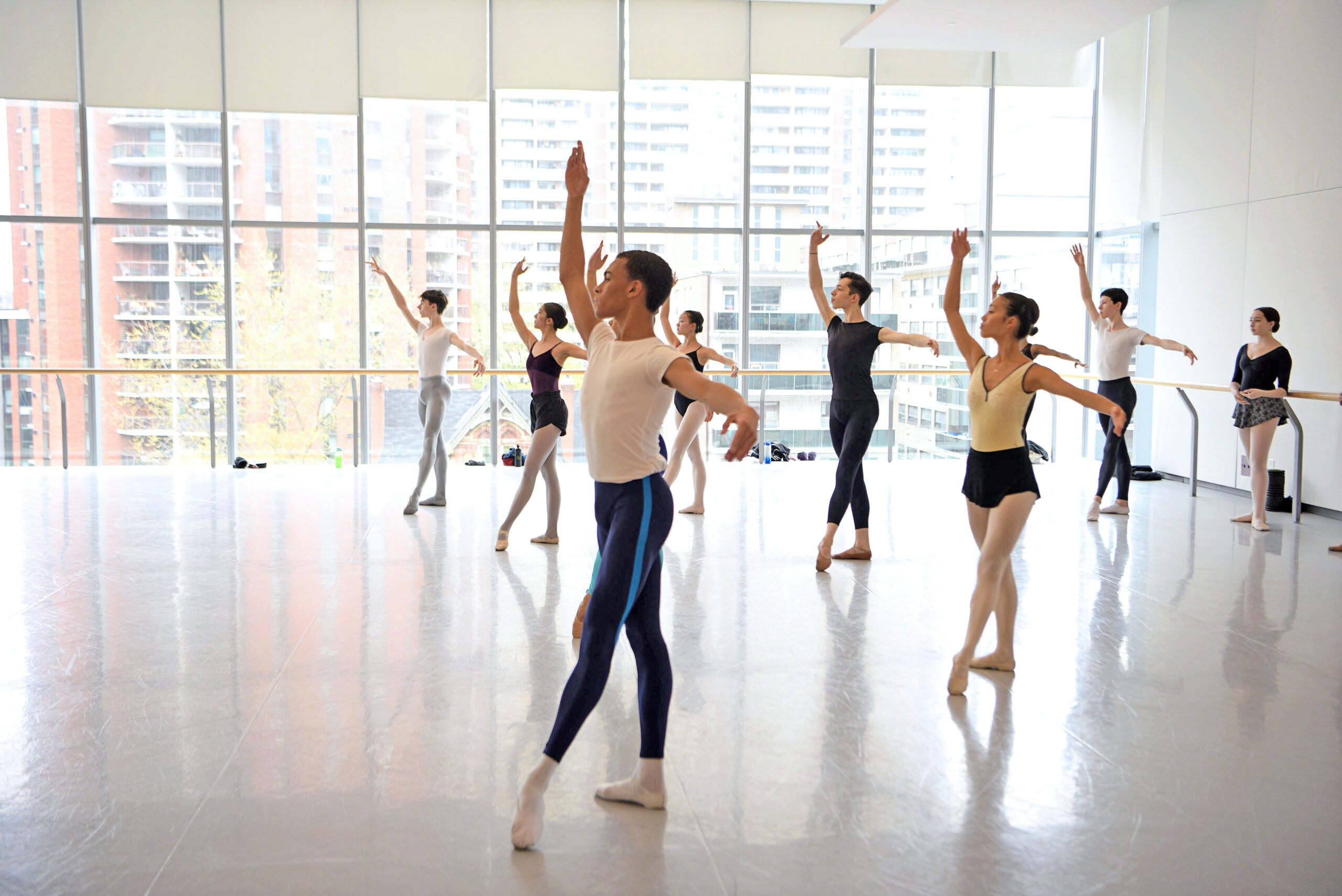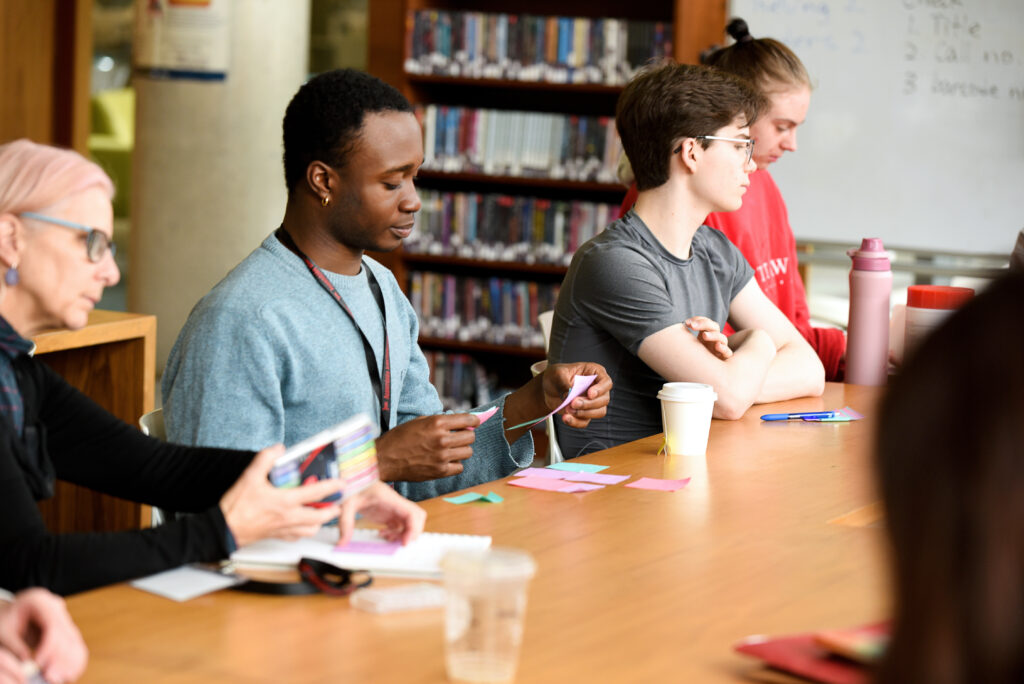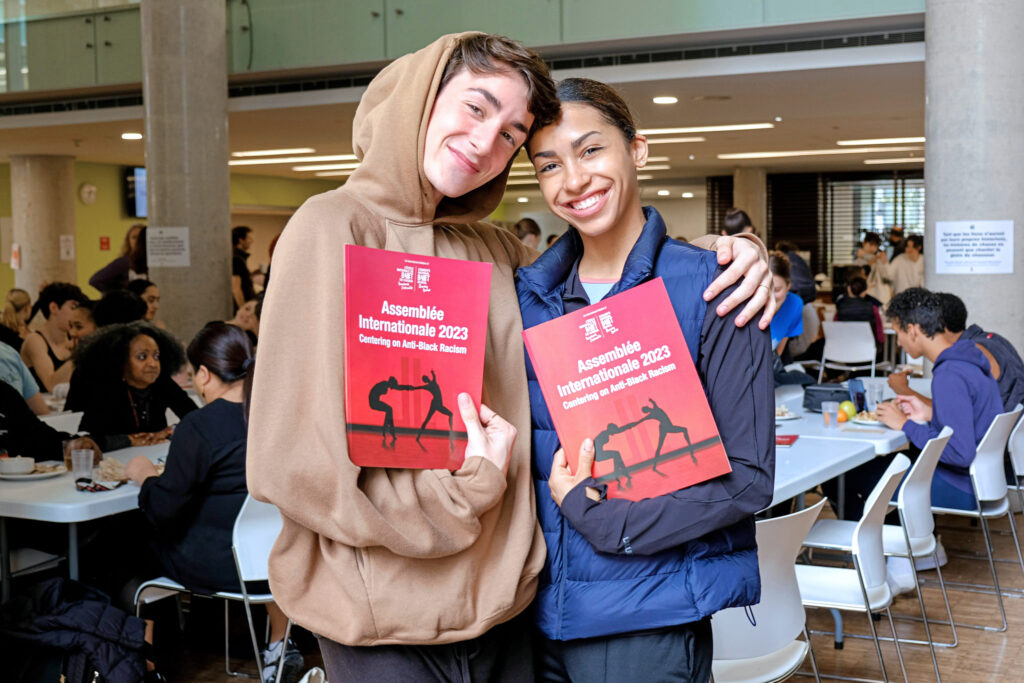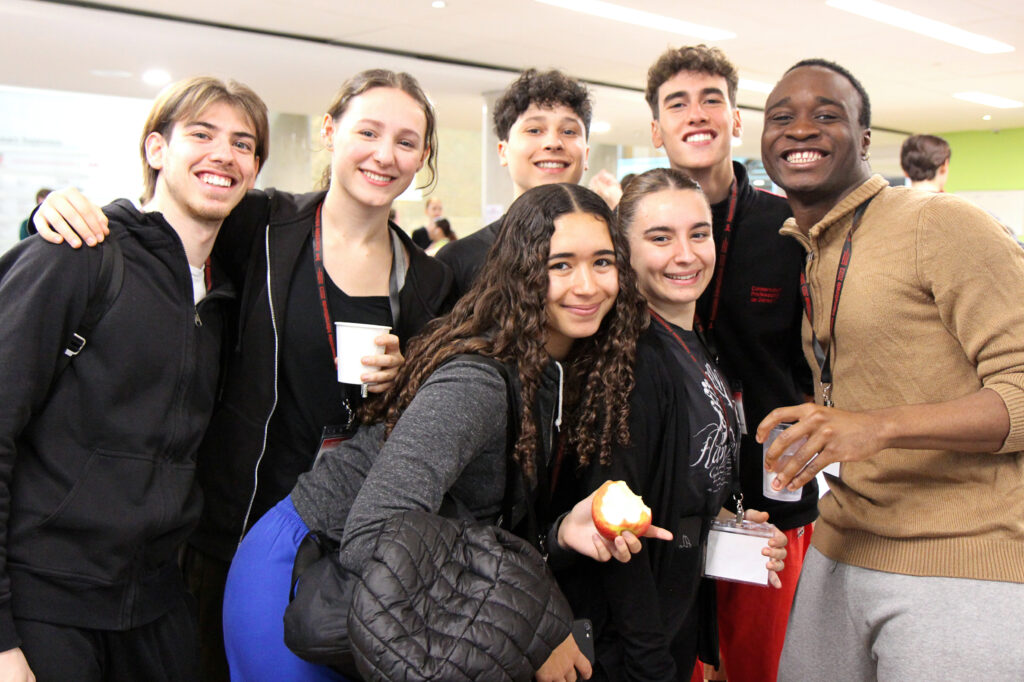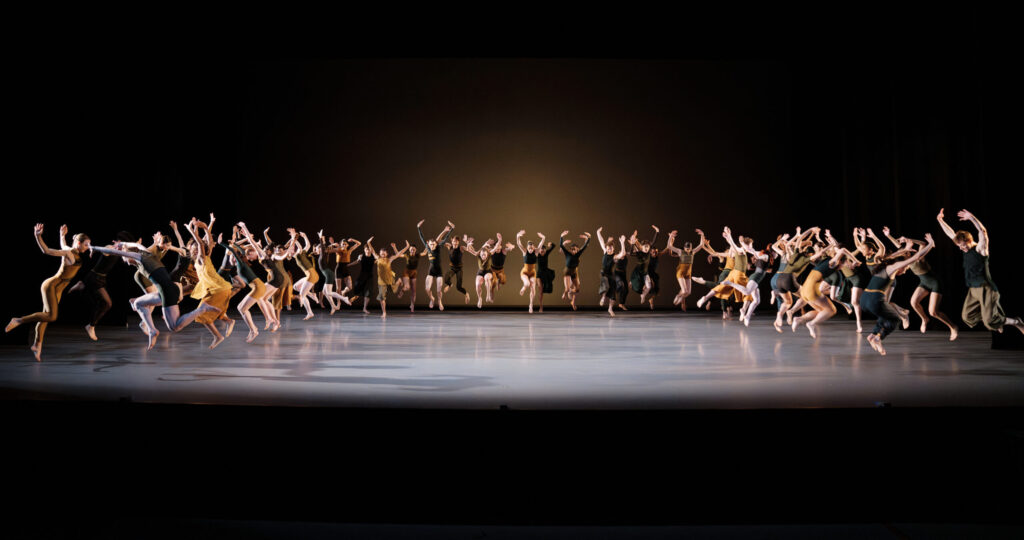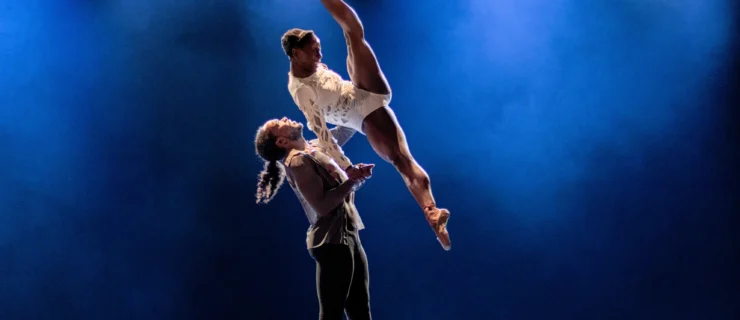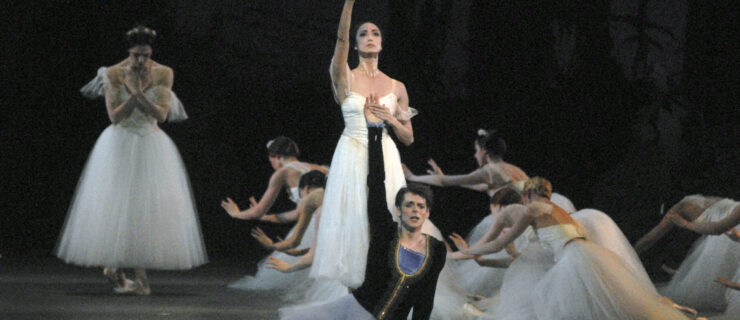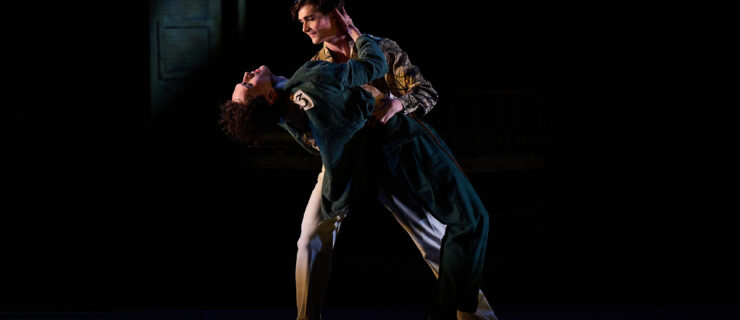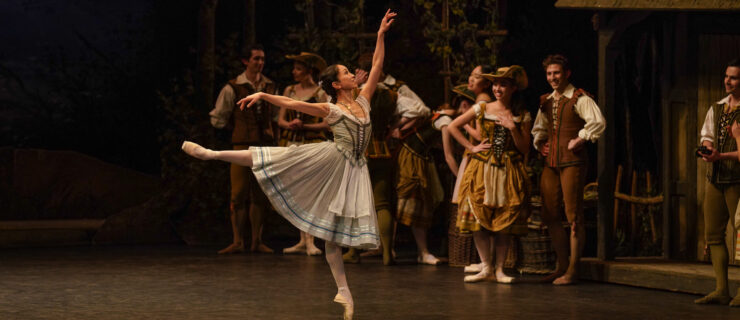Unpacking Racial Inequities in Ballet at Canada’s National Ballet School’s 2023 Assemblée Internationale
April 30 to May 6, students and educators representing 37 pre-professional training institutions from across the world gathered in Toronto, Canada, to unpack racial inequities within ballet education and the ballet industry as a whole.
Hosted by Canada’s National Ballet School (NBS), Assemblée Internationale is a quarter-annual festival created in 2009 to inspire collaboration among international ballet institutions. For seven days, students and artistic leaders participate in intergenerational learning sessions, classes, and rehearsals, culminating in a final performance at the end of the week. But this year was different. For the first time, the “AI23” festival focused on addressing anti-Black racism, included months of online panels leading up to the in-person event, and organized a student think tank to drive the planning.

The festival’s first iteration, in 2009, marked NBS’s 50th anniversary; Mavis Staines, the school’s artistic director and CEO (who just announced her retirement come June 2024), wanted to give back to international ballet communities. She envisioned students and teachers training together and bringing repertoire reflective of their home cultures, including student choreography performed by blended casts of students from participating schools.
“I thought there are so many dance competitions right now, and while there are lots of benefits to dance competitions, it seemed to be that there were no gatherings that were about artistic collaboration and learning from one another without judgment,” she says.
NBS faculty member Keith Morino shares this sentiment. He believes that, in general, students’ voices are often forgotten during the organization of student events. But he sees value in being questioned and challenged by young people: “Losing touch with the ones who are actually living the experience is not productive,” he says.
A Clear Focus
Until this year, the festival had been themeless. Staines was inspired by feedback from her students and the events following the murder of George Floyd in 2020 to center AI23 on combating anti-Black racism.
Before then, Staines expresses not having yet fully recognized racial inequities within the artform. “I was so blind,” she says, recalling an argument with a colleague in 2016 in which she was asked how she planned to address those inequities.
After Floyd’s death on May 25, 2020, she was once again questioned about what she was going to do as a leader about equity and anti-Black racism in ballet, and why the school wasn’t doing more. NBS hadn’t made a statement or checked in with its Black students. Finally, Staines understood what she had been missing. So when the school canceled the 2020 festival because of the pandemic, she saw an opportunity to put her learning into practice.
This year’s festival ran seven days and included over 225 students from 35 schools, among which were New York City’s Dance Theatre of Harlem School, Havana’s Fernando Alonso National Ballet School, and the Paris Opéra Ballet School. Participants attended three phases: an educational lead-up, a performance, and a call to action.
The lead-up, a component added this year to ensure enough time to dig into anti-Black racism, started in October 2022. Spanning nearly six months, the online keynote speeches included “Race Literacy and Healing 101,” with Milagros Phillips, and panel discussions featuring artists including Misty Copeland, Joan Myers Brown, and Camille A. Brown.
The two-and-a-half-hour performance component, which ran May 4–6, featured eight works: The Call, by Esie Mensah and Robert Binet, a melding of Afro-fusion and contemporary ballet; Arise, by Jera Wolfe, a contemporary ballet piece featuring more than 100 dancers; and six student-choreographed works.
Young People, Big Voices
In addition to being one of AI23’s inaugural think tank members, Sydnie Holmes, 17, of the Boston Ballet School was also a student creator. The day before dress rehearsal, Holmes rehearsed her work Ballet D’Action, the largest student-choreographed piece in the festival, with 19 dancers. It was also the only student creation with dancers on pointe.
In the quiet studio, small groups of dancers went over choreography while Holmes focused on the duet that concluded her creation. Holmes was paired with a mentor: Aubrey Lynch II, dean of faculty and students at American Ballet Theatre Jacqueline Kennedy Onassis School, and a former Alvin Ailey dancer. Lynch observed and jumped in when needed to facilitate Holmes in communicating her vision.
Unlike her previous experiences choreographing, Holmes only had the festival week to rehearse in person. For months before that, the cast of international dancers had been rehearsing over Zoom. While she didn’t get much one-on-one time with the dancers during the digital phase, she says that once they were all together in person, she felt like she had known the other students forever.
“To see [the dancers] grow with the choreography, and now getting to see what they learned, what they picked up in person, it’s so rewarding,” she says, recalling moments during rehearsals when she thought, This is why I love to dance.
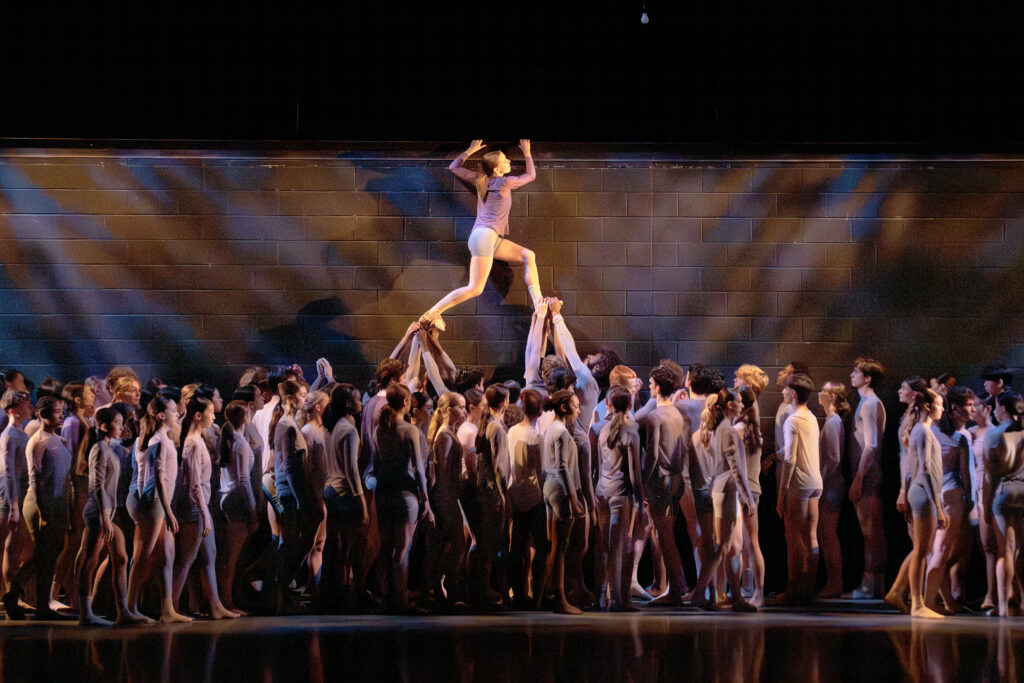
But Holmes’ AI23 experience went beyond the creative side of things. She also participated in online panels and keynote speeches, then in in-person learning sessions.
She specifically remembers a learning session with educator Theresa Ruth Howard, founder of Memoirs of Blacks in Ballet and a former Dance Theatre of Harlem dancer: Howard explained that equitable sentiments can’t merely be placed on a sticker or stated on a website. “We have to hold the anti-Black racism in our space and in ourselves to ever make change,” says Holmes.
She also says that while she hasn’t experienced that level of prioritizing racial equity in ballet, she sees a future in which she can change that.
Having been part of the AI23 Student Think Tank, a group of eight students brought together to help organize the festival, Holmes comments: “Being given some of that power back and the opportunity to say ‘This is how we want to see things’ was really special to me.”
The other think-tankers were Hannah Howell (The Ailey School), Olivia Bourk (Canada’s National Ballet School), Perla Pace (Dutch National Ballet Academy), Rilee Scott (New Zealand School of Dance), Caspar Lench (The Royal Ballet School), Kallum Connor Morris (The School of Hamburg Ballet), and Kaleb Bland (Dance Institute of Washington).
Bland, 17, joined the think tank because he’s always been passionate about advocacy.
“It’s really cool for me to be this age doing big things, making big changes,” he says. Bland believes that the discussions during the festival have the ability to impact the future of the industry because artistic leaders from 37 schools across the world were in attendance.

“Hopefully, they actually are taking in everything and starting to apply changes at their school, which can then trickle down to the companies,” he says.
Perla Pace, 17, also hopes that the festival had a lasting impact on the artistic leaders and that they have learned the importance of students’ voices.
“There’s so much more that we can add to the industry,” she says, as a student on the cusp of graduation. She also left the festival with some lessons learned: “To respect people, to be kind, to be responsible, and to reflect.”
Bland says his biggest takeaway is to have an open mind, heart, and spirit.
“When it comes to learning sessions, at least in person, hearing everybody’s different opinions, their experiences, it can be a lot,” he says. And while sitting in such intense moments can be uncomfortable, he continues, they are ultimately good for the future of the industry that these students want to lead.
